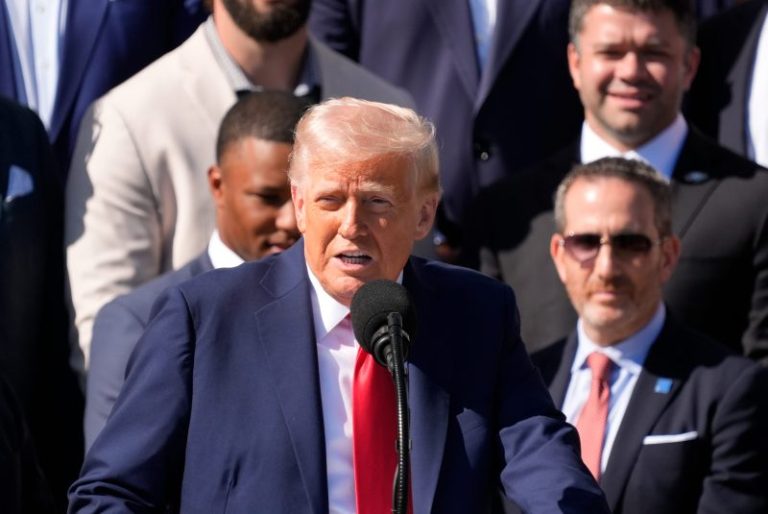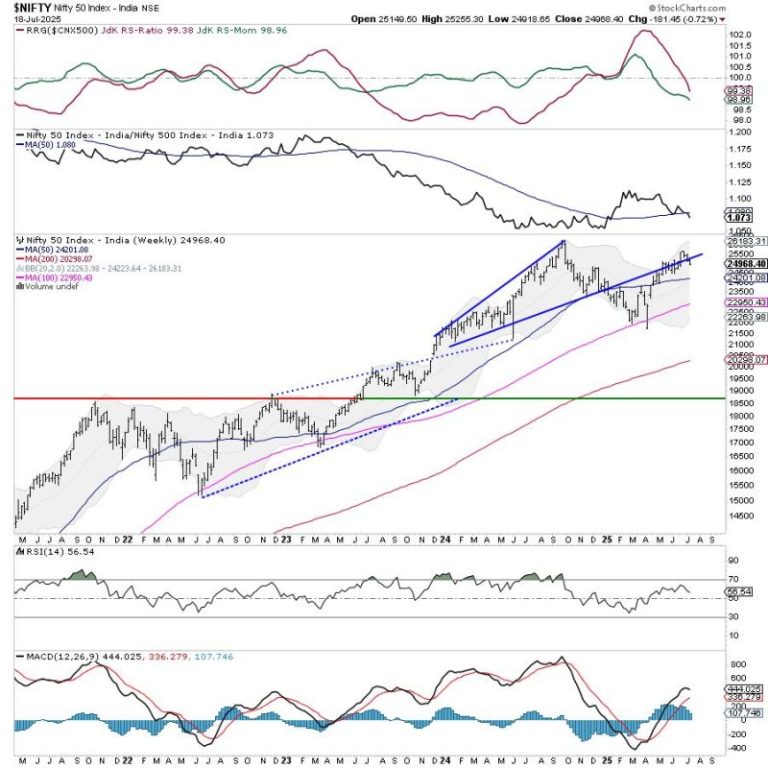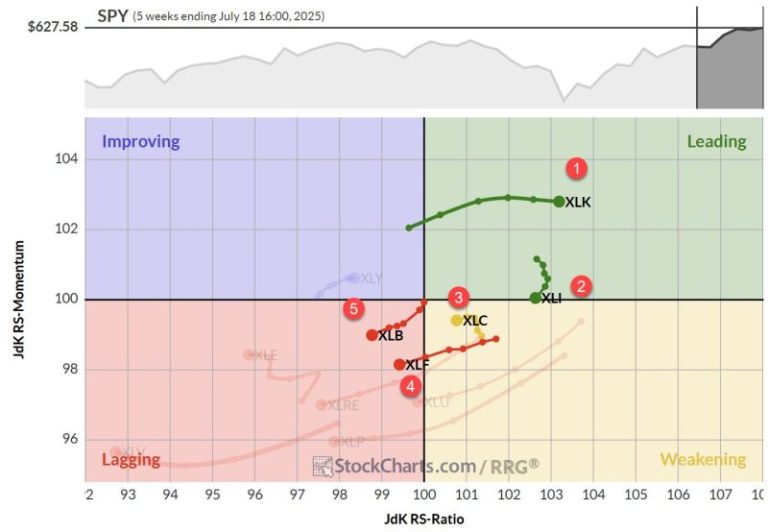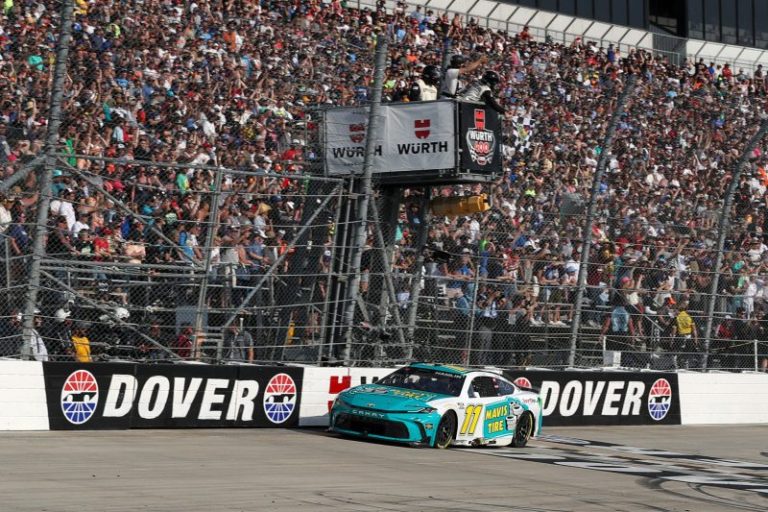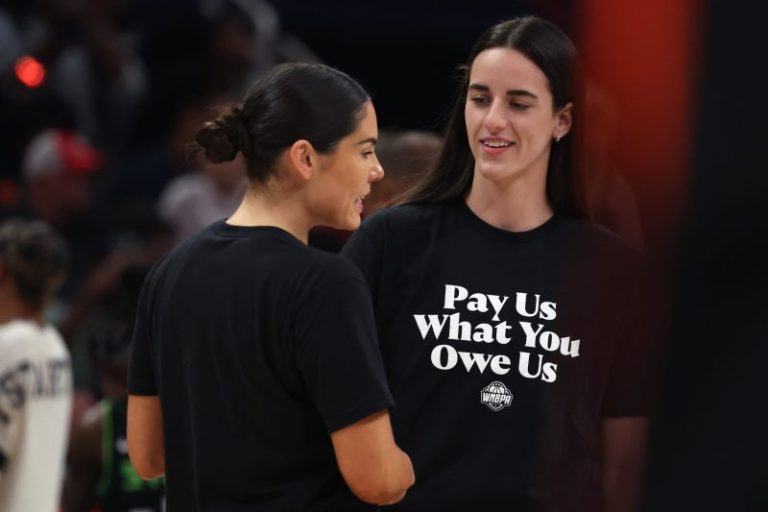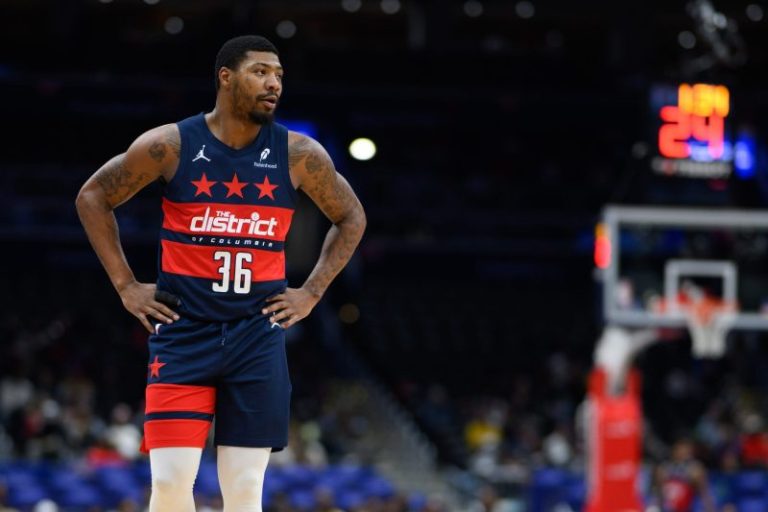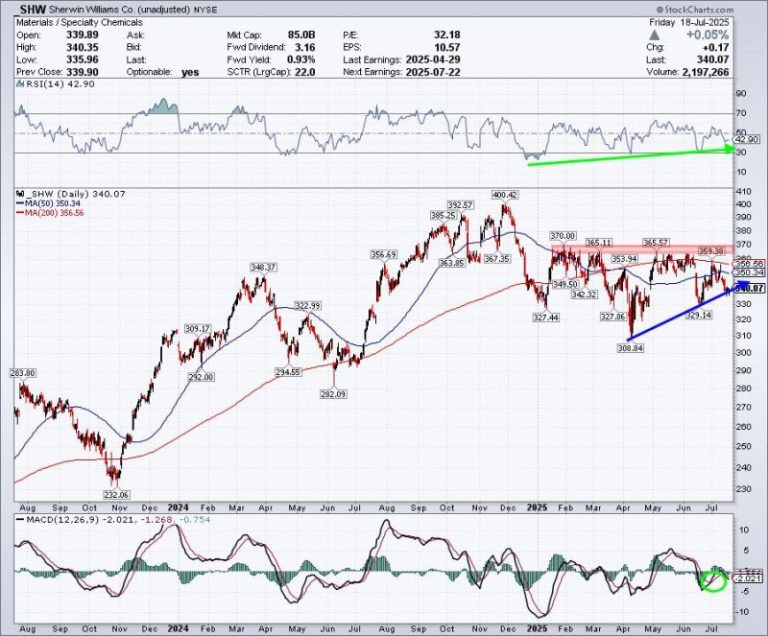Manny Pacquiao made a triumphant return to the boxing ring.
Even if it didn’t end in victory.
Fighting for the first time in nearly four years, the 46-year-old Pacquiao and 30-year-old Mario Barrios fought to a majority draw. The judges scored the welterweight bout 115-113 (in favor of Barrios), 114-114, 114-114 and Barrios retained his WBC welterweight title.
The crowd booed, but Pacquiao called it a ‘wonderful’ fight. It was an inspired performance from Pacquiao against a fighter 16 years younger than him.
‘I thought I won the fight. I mean, it’s close fight,’ Pacquiao said. ‘My opponent very tough. … Wonderful fight.’’
Barrios said he thought he “pulled (the fight) out. But I still tip my hat to Manny. It was an honor to share the ring with him.’’
Manny Pacquiao’s incredible stamina
Barrios said he was surprised by Pacquiao’s stamina at age 46.
“It was crazy. His stamina. He could still crack. He’s still strong as hell. And, you know, his timing is real and everything. He was still a very awkward fighter to try to figure out,’ Barrios said.
Pacquiao had not fought since 2021, when he lost to Yordenis Ugas by unanimous decision.
Pacquiao was asked about his stamina and how he pulled this off at age 46.
“Oh, just work hard. Hard work and then discipline. Everything like that,’’ Pacquiao said.
What’s next for Manny Pacquiao?
In the final rounds, Barrios said, his corner was telling him to pick it up and start pressing Pacquiao.
“That was the plan in the first place coming in here, try to make him feel old. But, man, he has such good legs, he has a lot in the tank. And … he still has a lot of fight left in him,’ Barrios said.
Barrios said he would give Pacquiao a rematch after being told by broadcaster Jim Gray that’s what Pacquiao wanted.
“Absolutely,’’ Barrios said.
Asked if he will fight again, Pacquiao said, “I think so. I think so. God willing.’’
The crowd cheered.
Manny Pacquiao vs. Mario Barrios: Round-by-round analysis
Welterweight bout, 12 rounds
Round 1
Manny Pacquiao is back! But, for how long? We’ll soon know as he and Mario Barrios respond to the sound of the bell. But before it sounds, up go the chants, “Man-ny! Man-ny!” Boy, Barrios is significantly bigger than Pacquaio. Barrios connects with his jab twice. Pacquiao looks a little unsure as he gets hit with the jab despite the chants. Pacquiao throws a left that lands to Barrios’ head. Pacquiao eats a jab from Barrios. Throws a left and takes a right from Barrios. Pacquiao lands a right and later rushes in but without conviction. Barrios looks prepared. Barrios 10, Pacquiao 9
Round 2
Barrios out quick with his jab. Barrios a little more aggressive with the jab. Barrios lands a jab and slips to the canvas. A clear slip. Barrios working that jab. Barrios using his reach well. Pacquiao less active in this round. Pacquiao lands a hard left and Barrios counters with a jab. Barrios peppering Pacquiao with the jab as the round ends. Barrios 20, Pacquiao 18
Round 3
Pacquiao rushes in for a left. The speed is there, but the punch did not connect. Pacquiao looking more aggressive. Barrios connects with a right to the body. Barrios connects with a jab as Pacquiao tries to close the distance. Pacquiao complaining about low blows. The ref shakes off the complaint. Clearly those body shots are bothering Pacquiao. Pacquiao lands a couple of punches and Barrios connects. Barrios 30, Pacquiao 27
Round 4
Pacquiao scores and back comes two fists from Barrios. Pacquiao lunges in for a shot, and Barrios seems prepared. The speed and power for which Pacquiao was known simply not apparent here. Barrios using his size difference. Pacquiao doing his best to close the gap but so far it’s not enough. Barrios 40, Pacquiao 36
Round 5
Pacquiao squirms in and lands to Barrios’ body. That looked like vintage Pacquiao. Is there more there? Pacquiao again, darts in and lands a left. Barrios counters with jabs. Pacquiao darts in again for the left. Pacquiao evades a punch and shows some quickness. Pacquiao closes with a flourish. Barrios 49, Pacquiao 46
Round 6
Pacquiao closes the gap and lands to the body and the head. There’s some old Manny. Barrios lands a snapping jab and follows it up with another. But Pacquiao is fighting through the punches in an attempt to land them. Pacquiao taking chances and lands a few body shots in close quarters. Pacquaio takes a punch but closes with a flourish. Barrios 58, Pacquaio 56
Round 7
Barrios still fighting behind the jab. In comes Pacquiao and he lands a combination. Then does it again! Barrios counters with a right. For all of Barrios’ size advantage, he’s yet to really hurt Pacquiao. Pacquiao takes a shot and gives one back. Up go the chants again: “Manny, Manny!’’ Barrios 67, Pacquiao 66
Round 8
Barrios lands a solid right and then a body shot. Pacquiao didn’t like that one. Barrios throwing punches but no successful combinations. He looks passive now as Pacquiao scores. Pacquiao was under siege and fired back. He turned back the clock there! Barrios 76, Pacquiao 76
Round 9
Pacquiao getting stronger? He’s taking it to Barrios now. Barrios punches, and Pacquiao immediately responds – with combinations. Now it’s Barrios looking tentative and unsure of himself. The crowd bathing Manny in chants. Pacquiao 86, Barrios 85
Round 10
Barrios strikes early. A hard exchange of body shots. Barrios lands a hard combo. But Barrios still looks a little tentative, but lands a hard left there. Pacquiao going toe to toe with a man 16 years younger than he is. More chants of “Manny, Manny!’’ Those massive Pacquiao claves have served him well. Pacquiao 96, Barrios 94
Round 11
Barrios strikes with both hands and with force. Then connects with the jab before Pacquiao responds. Pacquiao scores with a right hook and follows up with another before Barrios pounces. Pacquiao ducks a punch and delivers one. Still showing quickness, then eats a jab from Barrios. Pacquiao 105, Barrios 104
Round 12
They hug before the round begins. Barrios scores with a jarring right. Barrios lets fly with both hands. Pacquiao counters with a left. Up go the chants again with about a minute left. No overtime, folks. Barrios looking good as the round closes. The crowd is on its feet, even as Barrios looks in command. Pacquiao 114, Barrios 114
Manny Pacquiao vs. Mario Barrios fight card results
- Manny Pacquiao vs. Mario Barrios declared majority draw, welterweight bout, 12 rounds
- Sebastian Fundora def. Tim Tszyu by TKO, super welterweight bout
- Isaac Cruz def. Omar Salcido by unanimous decision, super lightweight bout, 10 rounds
- Brandon Figueroa def. Joet Gonzalez by unanimous decision, featherweight bout, 12 rounds
- Gary Russell Jr. def. Hugo Castaneda by TKO in 10th round, super featherweight
- Eumir Marcial def. Bernard Joseph by KO in third round, middleweight
- David Picasso def. Kyonosuke Kameda by majority decision, super bantamweight
- Mark Magsayo def. Jorge Mata by unanimous decision, lightweight bout
Manny Pacquiao vs. Mario Barrios ring walks
Mario Barrios is making his way to the ring first, despite being the reigning WBC welterweight champion. The honor of walking in last goes to Manny Pacquiao, the eight-division champion in his 16th ringwalk at the MGM Grand Garden Arena.
Both men are in the ring and Manny plays his favorite song: ‘Eye of the Tiger.’
Manny Pacquiao vs. Mario Barrios: Time, PPV, streaming for fight
Manny Pacquiao will face Mario Barrios on Saturday, July 19, at MGM Grand Garden Arena in Las Vegas.
- Date: Saturday, July 19
- Time: 8 p.m. ET
- Pacquiao vs Barrios main event ringwalks: 11 p.m. ET
- Stream: Prime Video PPV
Watch Pacquiao v Barrios with Prime Video PPV
Sebastian Fundora def. Tim Tszyu by TKO
Fundora proved his victory over Tszyu by split decision last year was no fluke.
That was clear when the 6-foot-5½ Fundora knocked down the 5-foot-8½ Tszyu in the first round, withstood a Tszyu rally and pounded away in the seventh round en route to a TKO victory.
When that round ended, the referee headed to Tszyu’s corner and spoke to the boxer. Moments later the referee halted the fight.
Ring announcer Jimmy Lennon said the fight was stopped “on advice of the corner.’’
Tszyu, asked after the fight what he told the referee, smiled and looked toward Fundora.
“He’s one tough (guy),’’ Tszyu said. “… He was just the better man.’’
Fundora, a 27-year-old from California, improved to 22-1-1. Tszyu, a 30-year-old from Australia, fell to 25-2.
Tim Tszyu vs. Sebastian Fundora: Round-by-round analysis
Super welterweight bout, 12 rounds
Round 1
Will the bloodbath from their first fight continue? Here come Tim Tszyu and Sebastian Fundora. Boy, almost forgot how tall Fundora is. Looks all of 6-foot-5½. And Tszyu looks not a smidge taller than his listed height of 5-foot-8½. Fighters trading jabs. No hint of the war Tszyu promised. Down goes Tszyu! He got hit with a left, but he’s back on his feet. That’s the danger in trying to close the game on Fundora. Fundora 10, Tszyu 8
Round 2
Well, now we know what that 9½-inch height advantage can mean. Will Tszyu have the courage to get close enough to take out Fundora? Fundora throwing the jab and has Tszyu cornered and now has him on the ropes. Fundora unloading! Tszyu gets free but he’s bleeding over the right eye. Fundora looks to be in command and strikes with jabs to Tszyu’s bloody face. Fundora 20, Tszyu 17
Round 3
Tszyu lands a solid right, temporarily slowing Fundora. But Fundora quickly goes on the attack again. Tszyu lands a couple of rights. Fundora lands another hard left as Tszyu scurries away. Now Fundora efficiently firing jabs. Fundora scoring with both hands. Fundora 30, Tszyu 26.
Round 4
Tszyu making an effort, but, boy, this is going to take more than effort. Fundora lands a straight right that hurts Tszyu. Tszyu lands a couple of solid rights! Fundora stands his ground and uncorks lefts and paws with the jab. Tszyu lands a big right and then a left. But Fundora happy to exchange. Tszyu willing to take risks by getting close to Fundora and Fundora is bleeding from the nose. Fundora 39, Tszyu 36
Round 5
Tszyu lands a hard right. And another. Fundora now leaning on the jab. But Tszyu no longer looks fearful. Fundora gets in range but misses. Now they trade blows. Fundora lands a couple of lefts and corners Tszyu. Fundora 49, Tszyu 45
Round 6
Fundora comes out quick with both hands and backs up Tszyu, who fires back with a couple of rights. Tszyu strikes to the body. Fundora’s face bloody, and blood on the side of Tszyu’s neck. Yeah, there are some punches being landed, folks. Fundora leaning on the jab again. Tszyu lands a hard left and Fundora counters. This fight has heated up. Fundora 58, Tszyu 55
Round 7
Even with the bleeding, Fundora seems to have found his range again. Tszyu is lunging on his shots. Tszyu lands a left. Fundora has Tszyu on the ropes and digs in with both hands. Now he’s in the corner and Tszyu lands a big right! They’re trading big shots at the center of the ring. Tszyu lands a big left, eats a left and here come more big punches. Wow. Fundora 68, Tszyu 64
The fight has been stopped! The referee confers with Tszyu and halts the fight! The decision to stop the fight before the eighth round started came ‘upon suggestion of the corner,’ Jimmy Lennon says.
Isaac Cruz def. Omar Salcido by unanimous decision
Salcido took the fight on a day’s notice. Poor guy.
The WBC interim world super lightweight title was at stake. So was Salcido’s health against the ferocious, 5-foot-4 Cruz.
The Pitbull landed his overhand right with force and frequency. Salcido, a replacement after Angelo Fierro withdrew on short notice, repeatedly held onto Cruz’s arms to, well, protect his heath.
The referee deducted one point for the rule violation in the 10th round. That’s the round in which Salcido’s knees hit the canvas. But he survived the round and one-sided matchup.
The judges scored it 99-89, 99-89, 100-88 for Cruz, a 27-year-old from Mexico who improved to 28-3-1.
Salcido, a 25-year-old from Mexico, fell to 20-3.
Isaac Cruz vs. Omar Salcido: Round-by-round analysis
Super lightweight bout, 10 rounds
Round 1
‘Pitbull’ Cruz has dispatched with the dog mask and Oscar Salcido is likely grateful as they head to the center of the ring. Cruz out quickly, pounding Salcido. Cruz whaling away and looks in command, landing plenty of body shots with vigor. Cruz lands a hard right to the head and pounces with punches as the bell rings. Cruz 10, Salcido 9
Round 2
Salcido looks a little apprehensive. Wouldn’t you? Cruz closing the gap and then digging into Salcido’s abdomen. Salcido throws a flurry and backs away. But Cruz keeps coming. Cruz 20, Salcido 18
Round 3
Cruz out quick with a big overhand right. And there’s no letup, as he then attacks Salcido’s body. Cruz hunting down Salcido like prey and throwing powerful shots. Cruz 30, Salcido 27
Round 4
Salcido finding a rhythm. Jumping in to throw a punch and jumping out before he gets caught by a counter punch from Cruz. In fact, he’s outpunching Cruz. But Cruz lands two huge left hooks – and continues to land the power shots. One of which left blood on the top of Salcido’s nose. Cruz 40, Salcido 36
Round 5
Salcido lands punches but nothing that’s hurting Cruz. Yet. Cruz fires back with a couple of body shots. Salcido holding onto Cruz’s arms – probably the most effective technique to slow Cruz down. Cruz looks like he’s trying to chop down a tree. But so far, no timberrrrrr! Cruz 50, Salcido 45
Round 6
Salcido lands several punches, but they’re not impacting Cruz like the left Cruz just landed on Salcido. Quantity not doing much for Salcido given the quality of Cruz’s power punches. Credit Salcido for throwing punches, including a left that landed as the bell rang. Cruz 60, Salcido 54
Round 7
Cruz keeping up the pressure, throwing those overhead rights. He just took a solid shot from Salcido, but he delivered two in return. Salcido on the move, but the ring is too confined to avoid Cruz very long. Cruz 70, Salcido 63
Round 8
Salcido lands a decent right. But Cruz whips a right across Salcido’s face. Salcido counters with a right and things get a little messy as the referee warns Salcido for holding. Cruz pounces. No holding? Salcido’s in trouble. Salcido stands his ground. Cruz digging in. To his credit, Salcido fighting back. Cruz 80, Salcido 72
Round 9
Cruz does a little headhunting. But then back to the body. They get tangled up briefly. Notable: 18 of Cruz’s 27 victories have come by knockout. Can he add to the total? Looks unlikely considering Salcido has made it this far without hitting the canvas. Cruz 90, Salcido 81
Round 10
The fighters give each other a little hug as the round starts. But the affection quickly fades as Cruz whales away again. But Salcido lands punches and is as active as ever. Cruz rewards him with a left to the chin. Cruz unloads! Salcido holds on to Cruz’s arms and the referee deducts a point. Down goes Salcido, dropping to his knee. He gets back up and Cruz pounces again before the bell sounds. Cruz 100, 88
Brandon Figueroa def. Joet Gonzalez by unanimous decision
Figueroa and Gonzalez clasped hands and raised arms into the air after their 12-round featherweight fight.
It was a wonder they could get those arms aloft.
Figueroa and Gonzalez combined to throw almost 1,900 punches. Figueroa landed 282 punches and Gonzalez landed 265.
Gonzalez wore the evidence, with swelling, bruising and blood covering his face. Figueroa looked less hurt, especially after being declared the victor.
The judges scored it 115-113, 116-112, 116-112 for Figueroa, the 28-year-old from Texas. He improved to 26-2-1.
Gonzalez, a 31-year-old from Los Angeles, fell to 27-5.
Brandon Figueroa vs. Joet Gonzalez: Round-by-round analysis
Featherweight bout, 12 rounds
Round 1
The countdown continues to Manny Pacquiao’s return, with Brandon Figueroa and Joet Gonzalez first up on the main card. Gonzalez out quick, and just as quick he’s eating jabs from Figueroa. They’re settled at the center of the ring and no one has emerged as an aggressor. Now Figueroa on the march and digs into the body. Gonzalez throwing, but off the mark. Figueroa using his jab well. As he comes forward, Gonzalez responds, but Figueroa fights back. Figueroa 10, Gonzalez 9
Round 2
Fighters trade a flurry of body shots. Still digging in to the body before Gonzalez goes headhunting. More body work, but the heads aren’t safe as the punches fly. Gonzalez connects with a solid left hook. Figueroa stands his ground and is absorbing shots as a result. Is CompuBox going to be able to keep count here? Replay shows Figueroa punching himself on the brow. Really. Figueroa 19, Gonzalez 19
Round 3
Gonzalez firing away, to the body and the head. Figueroa responds but without power. Figueroa tap-tap-tap and Gonzalez tearing away. Gonzalez showing speed as Figueroa plods. Gonzalez bleeding from above his right eye. Gonzalez 29, Figueroa 28.
Round 4
Figueroa comes out throwing uppercuts with more authority and follows that up with left uppercuts to the body. They’re in close quarters and Gonzalez gets off punches but not enough to slow Figueroa now. Blood covering Gonzalez’s face, and he scores with the jab. It’s Rock ‘Em, Sock ‘Em Robots here. Gonzalez 39, Figueroa 37
Round 5
No slowdown for these two fighters. Gonzalez wades in despite the chance of headbutts and fact he’s already bleeding. He digs into the body and so does Figueroa. Gonzalez pounds Figueroa in the head. Blood flowing again but proving to be no problem for Gonzalez so far. Gonzalez 49, Figueroa 46
Round 6
Figueroa gets out quickly and works the body. To this point it’s been Gonzalez working Figueroa’s body like a side of beef. Fighters in close quarters again. An impressive volume of punches. If they’re getting paid by the punch, it’s going to be a good night. Gonzalez 58, Figueroa 56
Round 7
The fighters come out and again look Velcroed together. Gonzalez digging in to the body with force and Figueroa responding less forcefully. Too many blows to highlight – and to count. Gonzalez 68, Figueroa 65
Round 8
Figueroa comes out working and fires uppercuts with both hands. Gonzalez pushes back, but Figueroa looks to be in good position. Gonzalez scores with a flurry. Figueroa lands a hard body shot, but Gonzalez lands a hard right to the head. Gonzalez 78, Figueroa 74
Round 9
Figueroa marching forward despite the active fists of Gonzalez. Both content to remain in close quarters. Gonzalez lands a hard right, and soon after takes a left hook. But Figueroa stands his ground. Only to get tagged again. Gonzalez 88, Figueroa 83
Round 10
Figueroa likely down big on the scorecards but showing fight. Figueroa revving up, and Gonzalez happy to trade inside. What a messy cut over Gonzalez’s right eye, and Figueroa suddenly looks to be in control. At least for now. Gonzalez 97, Figueroa 93
Round 11
Gonzalez’s face looks in serious need of ice. Like, bags of it. It appears Figueroa’s been connecting more than we realize. CompuBox shows they’ve thrown over 1,500 punches, and Figueroa is pouring it on. Figueroa tearing into the body and Gonzalez looks a little unsteady even though he’s fighting back. Gonzalez 106, Figueroa 103
Round 12
Gonzalez resembles Frankenstein’s monster, and we mean that in the kindest way possible. What a beating he’s absorbed while hurting Figueroa too. But now Figueroa is surging. More punishing exchanges. Just no letup, especially from Figueroa. Amazing effort from both boxers. Gonzalez 115, Figueroa 113
Manny Pacquiao vs. Mario Barrios fight card
Main card
- Manny Pacquiao vs Mario Barrios; WBC welterweight title
- Sebastian Fundora vs Tim Tszyu; WBC super welterweight title
- Isaac Cruz vs Angel Fierro; Super lightweight
- Brandon Figueroa vs Joet Gonzalez; Featherweight
- Gary Russell Jr vs Hugo Castaneda; Super featherweight
Manny Pacquiao vs. Mario Barrios fight card odds
All odds are for moneyline bets as of Thursday, via BetMGM
- Manny Pacquiao (+270) vs. Mario Barrios (-380): WBC welterweight title
- Sebastian Fundora (+125) vs. Tim Tszyu (-165): WBC super welterweight title
- Isaac Cruz (-600) vs. Angel Fierro (+350): Super lightweight
- Brandon Figueroa (-250) vs. Joet Gonzalez (+175): Featherweight
- Gary Russell Jr. (-1600) vs. Hugo Castaneda (+650): Super featherweight
Manny Pacquiao vs. Mario Barrios Predictions
Josh Peter, USA TODAY: Barrios by TKO in the 10th
Peter writes, ‘Mario Barrios is the ideal opponent for Manny Pacquiao because Barrios’ aggressive style and flawed defense make him vulnerable to Pacquiao’s creative combinations. Perhaps. But that minimizes other important issues. At 6-0, Barrios will be the tallest opponent the 5 ½ foot Pacquiao has ever faced. Pacquiao has not fought professionally in almost four years. Furthermore, Barrios is 30 and Pacquiao is 46. It’d be great to have the Pac-Man back for more than one fight, but don’t count on it.’
Brent Brookhouse, CBS Sports: Barrios by KO
Brookhouse writes, ‘We’re talking about a 46-year-old man who is returning from years of being retired and who was on the downside of his career when he hung up his gloves the first time. Pacquiao looks to be in great shape, but translating that to success against a younger, bigger fighter who has been active in big fights is simply too big of an ask. Expect Pacquiao to show a few flashes early before Barrios gets rolling. Once Barrios is doing his thing, there’s going to be a time when Pacquiao either gets stopped or his team will need to stop the fight for him.’
Anatoly Pimentel, BetMGM: Pacquiao by unanimous decision
Pimentel writes, ‘I expect Pacquiao to go all out in the first six rounds of the match because this is what he did against Thurman before, scoring an early knockdown. That knockdown became crucial in the judges’ scorecards, which helped him secure the split decision win. As for Barrios, he should weather the early barrage from Pacquiao and turn it up in the tail end of the fight, where Pacquiao would be more vulnerable to counter punches and power shots. Additionally, he should fully utilize his height and reach advantages to keep the challenger at bay while landing his punches and combinations.’
Manny Pacquiao faces moment of truth
Punching as hard as ever. Showing impressive speed. In great condition.
The reports out of Manny Pacquiao’s training camp about the 46-year-old boxer have been glowing. But it’s too early to know what that means, said Chris Algieri, the former WBO junior welterweight champion who will be co-hosting PPV.COM’s viewer chat during the fight.
“We have an old saying in boxing,’’ said Algieri, who was knocked down by Pacquiao six times in a unanimous decision loss in 2014. “They get old in the ring. You got a 46-year-old brain that hasn’t taken any punches in four years. That could play a major factor.’’
Manny Pacquiao vs. Mario Barrios breakdown
If Manny Pacquiao proves to be as good as the reports out of his training camp suggest, former WBO junior welterweight champion Chris Algieri has identified some key factors in Pacquiao’s fight against Barrios.
Algieri suggests too much is being made about the height advantage the 6-0 Barrios will have over the 5-5 ½ Pacquiao. “He liked fighting taller fighters,’’ Algieri said. “One of them was myself, Oscar De La Hoya, Antonio Margarito. He dominated all three of us.’’
Additionally, Algieri said, Barrios likes to exchange punches and is “there to be hit.’’
“I think in Manny’s prime, Barrios would be tailor-made, but we’re not dealing with Manny in his prime by any means,’’ Algieri added. “And for Barrios, he does a lot of things that would give Manny trouble. Barrios, he’s got the length, he’s got the youth, he’s got the strength, (and) he’s got very good fundamentals.’’
Manny Pacquiao’s power
Justin Fortune, Pacquiao’s strength and conditioning coach, said he held the mitts for the Filipino star the week before the Barrios fight.
“I wanted to see how he punched and if he still has it,’’ Fortune told USA TODAY Sports. “I actually forgot how hard this (dude) punches. He punches hard and he digs his knuckles in, which makes it even worse.’’
Pacquiao is a welterweight, but Fortune said the 5-foot-5½ boxer punches like a middleweight.
“A good middleweight,’’ he added.
When did Manny Pacquiao retire?
Manny Pacquaio retired after his loss to Yordenis Ugas by unanimous decision in 2021. But after losing in his Senate race in the Philippines, Pacquiao came out of retirement to fight Mario Barrios for the WBC welterweight championship. It’ll be his first fight since the defeat to Ugas.
Pacquiao or Barrios: From boxer who fought both
Keith Thurman, the former welterweight world champion boxer, earned unique insight into the welterweight matchup between Manny Pacquiao and Mario Barrios set for Saturday, July 19.
He did it by getting in the ring with both men.
Thurman went 12 rounds with Pacquiao in 2019 and suffered a split-decision loss. He went 12 rounds with Barrios in 2022 and won by unanimous decision.
But the only man who knocked him down was Pacquiao, who dropped Thurman in the first round. So, of course, that’s his pick to win the fight, right?
Well, not quite.
Read more on Keith Thurman’s take on Pacquiao vs. Barrios from Josh Peter.
Manny Pacquiao vs. Mario Barrios main card, ring walk start times
- Main card start time: 8 p.m. ET
- Main event ring walks: 11 p.m. ET (approximate)
Manny Pacquiao vs. Mario Barrios live stream, price
Manny Pacquiao will face Mario Barrios on Saturday, July 19, and the event will be streamed on Prime Pay-Per-View. In the U.S., fans can purchase the event for $79.99.
Manny Pacquiao vs. Mario Barrios: Tale of the tape
This post appeared first on USA TODAY

